IL VANGELO SECONDO MATTEO
Απρ 23, 2025 Κινηματογράφος 0
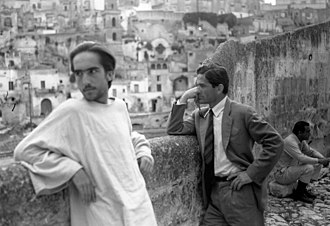
MOVIE REVIEW
PASOLINI’S OPINION
Il vangelo secondo matteo: by Giannis Fragoulis
In 1964 Pierre Palo Pasolini was in Assisi and the gospels fell into his hands. He chose the one of Matthew and, with no other script, headed with his film crew to the small mountain town of Basilicata in southern Italy. There, he would film Jesus in a way that would define, as no other, his image in the Seventh Art. It gives the sense that he is filming the biblical drama through the eyes of a believer. And he does, to a certain extent. One has to look at the points to see that the Italian director, is making an anachronistic, even subtly heretical film about Jesus. Having taken his first steps in the wake of Italian neorealism, he knows exactly which canvas of physicality to use, adding his own anarchic touches.
Il vangelo secondo matteo: The film
Realism and poetry coexist in the film. We could classify this film as poetic realism if there was a more pronounced poetic cause in its discourse. So Pierre Paolo Pasolini is trying to break the boundaries of neorealism to create a poetic narrative. The brake, in this attempt, is that he does not want to violate the evangelical word too much. There are very few places that violate Matthew’s word. The director chooses this evangelist because his word is the most anaphoric, telling the events as they happened.
We know that the four evangelists wrote the events while they were in different places. Some spiritual force was dictating the text to them. This is what the doctrine of the Christian religion states. Let us accept it, however, having serious objections, since other gospels were found and some others were declared apocryphal and forbidden to be included in the church service. So the gospel texts went through a kind of censorship and evaluation. In any case, these are the ones that are present in church services and we are obliged to accept them.
Il vangelo secondo matteo: The director
This is exactly what Pier Paolo Pasolini did. Being irreligious and a marxist, making a film based on the Gospel of Matthew was a difficult task. Says the director: «The great difficulty of the gospel was precisely not to destroy Matthew’s narrative, to keep it standing at all costs. This, among other things, forced me to strike an extremely difficult balance between my own point of view and that of the believer – that is, between two narratives. I think I have been as consistent as possible. On the other hand, the reversal I have performed is obvious: it refers to a whole bourgeois, but also commercial, iconography. I have done my best to preserve and draw out the reality of Matthew’s narrative, and that, with a polemic: against the fanaticism of a certain Marxism and a certain populism.»
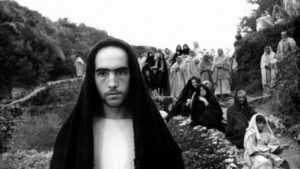
Pier Paolo Pasolini often makes daring ventures that can easily give rise to misunderstandings by those who want to fight his word. Let me remind you that the director’s enemies were the Catholic Church and the Communist Party, although he himself was a communist and what he said in his films later became the main slogans of the Communist European parties. Is it strange that a Marxist would make a film with a script that follows the evangelical word?
Il vangelo secondo matteo: The extension
I believe that Pier Paolo Pasolini is trying to set a «boscule»: the evangelical word is a given. Anyone can read it and will be able to control the script of the film. On the other hand, it is a daring to give an extension of the evangelical word by going in a direction of questioning the dogmatic word. This questioning can answer questions such as: What does the gospel mean to an oppressed person? Should we believe in sociological theology? Can we learn anything from the ecclesial discourse of persecuted people as expressed in some South American churches?
The director of this film accepts the questioning, but not the denial of the gospel word. He sees this as an opportunity to open up the text of the gospel to the word of people who claim equality, freedom and democracy. The script does not want to go into the essence of Christian philosophy and question its philosophical, sociological and political aspects in terms of the direction of a society that serves man, in a democratic and friendly way for any human being. That would be another movie. In large part, he attempted it in «Theorema».
Il vangelo secondo matteo: The dare
Clearly, the scriptwriting is walking a tightrope. At any moment it can fall into a void and fail. Pierre Paolo Pasolini is not afraid of failure. On the contrary, he seems to like this daring. It is difficult in a film to develop the entire evangelical text. The director prefers to leave gaps that the viewer can easily fill in, even if he has not read this gospel. Christ is shown as a good and sober man. However, at certain points, which are central to his philosophy, he shows his rebellious character.
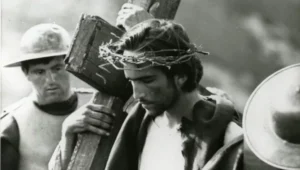
In this way his polemic against the scribes and Pharisees can be explained. He accepts the Jewish religion, but dares to change some points to make his own worldview which will become his proposed religion. In the film, the father’s word is omnipresent. We should understand that the father has a dual meaning he is the one who has contributed to the birth of a child, also he is the archetype as defined by Carl Gustav Jung in his psychoanalytic theories.
Il vangelo secondo matteo: The fate
Pasolini’s Christ is human and, increasingly, acquires divine powers. He does not become something like a superman, for that would mock his persona and would be completely contrary to evangelical teachings. He is, still, a man who loves his fellow man and tries to make his fate better, to break the fetters set by the Jewish authority, to challenge the authority of the Roman Empire. In this way a window is opened where the evangelical word can be extended so that it can meet the ecclesial word that exists, as we have said, in South America.
Of course, this vision of Pier Paolo Pasolini predates the ecclesiastical vision in the South American countries, where part of the Church was fighting against the dictatorships in those countries. The scriptural discourse does not urge us to believe dogmatically in the Christian religion, but to look at it critically and to keep what we care about from it. In other words, opening the gospel text, the script has points where everyone can adapt them to their own ideological positioning.
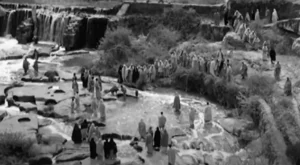
Il vangelo secondo matteo: The actors
These are the reasons why this film was eventually awarded by the official Catholic Church, but also by various festivals, film critics, film critics. It is not a text that would be described as ecclesiastical; it respects theological considerations, but dares to open a dialogue without completely challenging the evangelical vision. The way in which Christ is incarnated is wonderful, without exaggeration, in a realistic way. Also the lament of the adult Virgin Mary is perfectly realistic, letting the emotion come out and create another narrative that emphasizes the mother, here seen more as an archetypal persona.
The director knows which points to omit, which to emphasize, which to insist on in order to form a perception. The editing unites, in a realistic and poetic way, the scenes, linking different moments in time in a poetic way, creating a narrative that approaches poetic realism. Pier Paolo Pasolini successfully brings to bear the difficult task of teaching amateur actors to perform flawlessly, even in close-ups where mistakes would be seen. Note that the adult Madonna, played by the director’s mother, was nominated for a Best Supporting Actress Oscar. The sets are completely realistic. We have the very poor villages of southern Italy which give us the impression of the poor people, hence of Christ’s revolution, and creates points of identification of the popular movement with the teachings and attitude of Christ, another point of questioning the doctrine where the poetic cause dominates.
IL VANGELO SECONDO MATTEO
Directed by Pier Paolo Pasolini
Written by Pier Paolo Pasolini
Photography by Tonino Delli Colli
Editing by Nino Baragli
Music by Luis Bacalov
Sound by Fausto Ancillai, Mario Del Pezzo
Props by Andrea Fantacci
Costumes: Danilo Donati
Producers: Alfredo Bini
Actors: Enrique Irazoqui (Christ), Margherita Caruso (Maria, young), Susanna Pasolini (Maria, adult), Marcello Morante (Giuseppe), Mario Socrate (John the Baptist), Settimio Di Porto (Peter), Alfonso Gatto (Andreas), Luigi Barbini (James), Giacomo Morante (John), Giorgio Agamben (Philip), Guido Cerretani (Bartholomew), Rosario Migale (Thomas), Otello Sestili (Judas)
Country of production: Italy, France
Year of production: 1964
Language: italian
Colour: black and white
Genre: biography, tragedy, history
Duration: 137΄
For more information on the coefficients and technical characteristics see here.
Read the reviews we have published
Σχετικά άρθρα
-

-
 THE RETURN OF IVAN
THE RETURN OF IVANΑπρ 15, 2025 0
-

-
 EN FANFARE
EN FANFAREΑπρ 12, 2025 0
Στην ίδια κατηγορία
-
 ΟΙΚΟΥΜΕΝΙΚΗ ΓΛΩΣΣΑ
ΟΙΚΟΥΜΕΝΙΚΗ ΓΛΩΣΣΑΑπρ 23, 2025 0
-
 ΤΟ ΚΑΤΑ ΜΑΤΘΑΙΟΝ...
ΤΟ ΚΑΤΑ ΜΑΤΘΑΙΟΝ...Απρ 22, 2025 0
-
 01 ΝΑΝΟΣ ΒΑΛΑΩΡΙΤΗΣ...
01 ΝΑΝΟΣ ΒΑΛΑΩΡΙΤΗΣ...Απρ 18, 2025 0
-

Αναζήτηση
-
 WONDER WOMAN
WONDER WOMANΙούν 09, 2017 138
-
 ΠΑΙΔΙΚΗ ΣΚΗΝΗ
ΠΑΙΔΙΚΗ ΣΚΗΝΗΟκτ 12, 2014 2
-
 ΚΛΗΡΩΣΗ ΠΡΟΣΚΛΗΣΕΩΝ
ΚΛΗΡΩΣΗ ΠΡΟΣΚΛΗΣΕΩΝΜαρ 22, 2014 2
-
 ΔΥΟ ΜΕΡΕΣ, ΜΙΑ ΝΥΧΤΑ
ΔΥΟ ΜΕΡΕΣ, ΜΙΑ ΝΥΧΤΑΝοέ 13, 2014 2
-
 ΑΧΙΛΛΕΑΣ ΨΑΛΤΟΠΟΥΛΟΣ
ΑΧΙΛΛΕΑΣ ΨΑΛΤΟΠΟΥΛΟΣΝοέ 09, 2014 2
-
 ISTABUL FILM FESTIVAL
ISTABUL FILM FESTIVALΜαρ 08, 2014 2
-
 IL VANGELO SECONDO MATTEO
IL VANGELO SECONDO MATTEOΑπρ 23, 2025 0
-
 ΟΙΚΟΥΜΕΝΙΚΗ ΓΛΩΣΣΑ
ΟΙΚΟΥΜΕΝΙΚΗ ΓΛΩΣΣΑΑπρ 23, 2025 0
-
 ΤΟ ΚΑΤΑ ΜΑΤΘΑΙΟΝ ΕΥΑΓΓΕΛΙΟ
ΤΟ ΚΑΤΑ ΜΑΤΘΑΙΟΝ ΕΥΑΓΓΕΛΙΟΑπρ 22, 2025 0
-

-
 01 ΝΑΝΟΣ ΒΑΛΑΩΡΙΤΗΣ MARIA WILSON
01 ΝΑΝΟΣ ΒΑΛΑΩΡΙΤΗΣ MARIA WILSONΑπρ 18, 2025 0
-

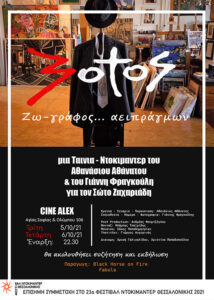
Δείτε το τρέιλερ της ταινίας μας, που συμμετέχει το Φεστιβάλ Ντοκιμαντέρ Θεσσαλονίκης.
SOTOS, EVERLASTING PAINTER (TRAILER)
Youtube
Επικοινωνήστε
ΓΙΑΝΝΗΣ ΦΡΑΓΚΟΥΛΗΣ
Email: info@filmandtheater.gr
Τηλ: (+30) 6974123481
Διεύθυνση: Ιωαννίνων 2, 56430, Σταυρούπολη Θεσσαλονίκη
![]()

